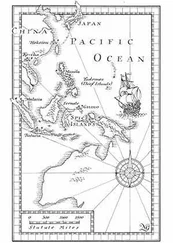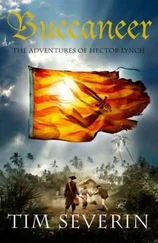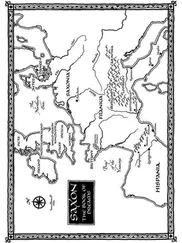'Won't that make the tower very heavy to move?' I objected.
'Yes, that's always a problem,' Nikephorus admitted. 'But with levers and enough manpower we should be able to roll the tower slowly forward. My main concern is that the Saracens will already have prepared the ground so that the tower topples before it is in place.'
We had clambered up a series of builders' ladders and were now standing precariously on the siege tower's highest crossbeam.
'See over there?' said Nikephorus pointing. 'That smooth, level approach to the city wall? It looks like the perfect spot for the tower when we launch our attack. But I am suspicious. It's too inviting. I think the defence has buried large clay pots deep in the soil at that point. The ground is firm enough to carry foot soldiers and cavalry, but if the tower rolls over them, the amphorae will collapse and the ground cave in. Then the tower will tilt and fall, and, in addition to the loss of life, we will have wasted weeks of work.'
But the Saracens did not wait for the operation of their sunken trap, if there ever was one. Even as Nikephorus and I stood on the half-built siege tower looking down on the suspect ground, a trumpet sounded the alarm. A sharp-eyed sentry had noticed the bronze gates of Syracuse were beginning to swing open. Moments later the gap was wide enough for a troop of Saracen cavalry to ride out. There were at least forty of them, and they must have hoped to catch the imperial troops by surprise with their sudden sortie. As they charged, they nearly succeeded.
There were more trumpet calls, each one more urgent, from the tagmata's lines. We heard shouts and orders from below us, and a squad of Greek heavy infantry came running towards the base of the tower. They were menaulatos, pikemen with long weapons specially designed to fend off a cavalry attack, and they must have been on standby for just such an emergency. They formed up around the base of the tower and lowered their pikes to make a defensive hedge, for it was now clear that the siege tower was the target of the Saracen sortie.
The raiders were led by a flamboyant figure. He wore a cloak of green and white patterns over his chain mail, and a scarf of the same colour wrapped around his helmet streamed out behind him as he galloped forward. The quality of his horse, a bay stallion, carried him well clear of his men, and he was shouting encouragement at them to follow him. Even the disciplined pikemen wavered in the face of such confidence. The rider swerved into a gap between the pikes. With a deft double swing of his scimitar, first forehand and then with a backward stroke, he hacked down two of our men before his horse spun round nimbly and carried him clear.
Seeing that the siege tower was now protected, the main raiding party changed the direction of their attack and rode towards the infantry lines, where lightly armoured troops were emerging from their tents, hastily pulling on their corselets and caps. The Saracens managed to get in among their victims long enough for them to cut down a dozen or so men before wheeling about and beginning to fall back towards the city gates.
Their entire sortie had been very quick. There had been no time for the imperial cavalry to respond, with the exception of just one man. As the Saracens were about to slip back through the city gates, a lone rider came out from the tagmata's lines. He was wearing mail and a helmet, and was mounted on a very ordinary horse which, even at a full gallop, would never have caught up with the retreating Saracens. He yelled defiance, and the green-clad leader must have heard his shout, for just as he was about to ride back in through the city gates, he glanced over his shoulder and turned his stallion. The Saracen then waited, motionless, facing his challenger. When he judged the distance to be right, he spurred his mount and the animal sprang forward.
Horse and rider were superb. The Saracen wore a small round shield on his left arm, and held his scimitar in his right hand.
Scorning the use of reins, he guided his mount with his knees and raced towards his opponent. At the last moment he bent forward in his saddle and leaned his body slightly to one side. The stallion responded by changing stride and flashed past the other horse, surprising the animal so that it checked and almost unseated its rider. At the same moment the Saracen slashed out with his scimitar at his enemy. Only by chance was the blow blocked by the long shield his opponent carried.
Belatedly I had made out that the Saracen's challenger was one of the Frankoi mercenaries. He appeared cumbersome and ungainly on his horse, and his weapon was a long iron sword instead of the heavy mace that an imperial cavalryman would have carried. Hardly had the Saracen ridden past his opponent than his agile stallion turned tightly and a moment later was galloping past the Frank, this time on the opposite side. Again the scimitar swept through the air, and it was all the Frank could do to raise his sword in time to deflect the blow.
By now the walls of Syracuse were lined with cheering spectators observing the unequal contest, while below them the troops of the tagmata stood watching and waiting for its inevitable outcome. The Saracen relished the audience. He played with the Frankish rider, galloping in, swerving, feinting with his scimitar, racing past, turning and coming again at a gallop. The heavily built Frank no longer attempted to urge his horse into action. All he could do was tug on the reins and try to turn his horse so that he faced the next attack.
Finally, it seemed that the Saracen had had enough of his amusement, and, riding a little further off than normal, he wheeled about and with a halloo of triumph came racing down on his victim. The scimitar was poised, ready to slice, when the Frank abruptly leaned back over the crupper of his horse. The Saracen's blow whipped through empty air, and at that moment the Frank swung his heavy sword. It was an ugly, inelegant blow. Delivered flat, and from a man almost lying on his horse's rump, it was an awkward scything motion requiring enormous strength of the arm. The long blade swept over the ears of the racing stallion and struck its rider full in the midriff, almost chopping the Saracen in half. The green and white striped cloak wrapped around the blade, the Saracen doubled forward even as he was swept out of the saddle by the force of the blow, and his corpse crashed to the ground and lay still. The helmet with its green and white scarf rolled off across the level ground.
For one moment there was a stunned silence, and then a great shout rose from the imperial lines. The stallion, puzzled by the sudden disappearance of his rider, whickered and turned to where his master's corpse lay, nuzzled the body for a moment, then trotted quietly back to the city gate, which was opened to let the creature in. The Frank ponderously rode back to the tagmata without a word or gesture.
He earned the name Iron Arm, Fer de Bras in his Frankish tongue, for his achievement. His adversary, we later learned, was a caid or nobleman of Syracuse. His defeat in single combat severely affected the morale of the city's defenders, while, on our side, the rank and file of the Greek army regarded the burly and taciturn mercenaries from Normannia with increased respect.

MANIAKES'S TROOPS HAD little time to celebrate. Word reached us that the Saracens were massing in the interior of Sicily, ready to march on Syracuse and relieve the siege. Their new army was commanded by another emir, and he was dangerous. Abdallah, son of the ruler of Kairouan on the Libyan coast, had brought several thousand seasoned warriors across the Great Sea, and our spies estimated that his force would soon increase to more than twenty thousand men, as more recruits were arriving every day.
Читать дальше








